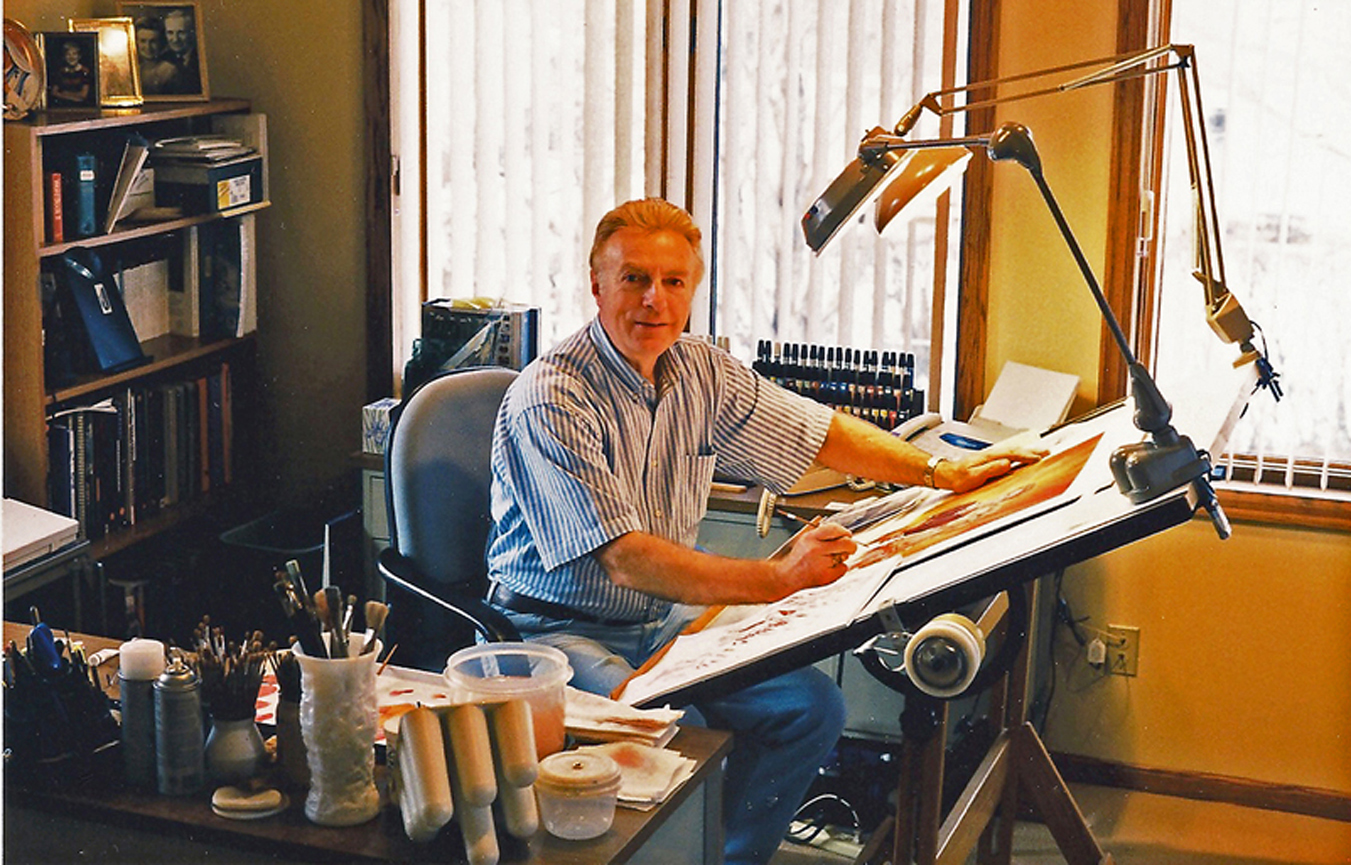Creator Spotlight with Illustrator Dick Bobnick

This week we would like you to meet Illustrator Dick Bobnick.
1. What was the inspiration behind you becoming an illustrator?
My parents tell me I liked drawing since I was four years old. My recollection starts about eight years of age. I loved drawing luxury cars, fire engines and Army vehicles. I also loved drawing movie stars and presidents. The first exhibit of my artwork was at the St. Paul Public Library when I was ten. It was then that I learned what an illustrator was and I decided that was what I wanted to be.
2. Can you take us through your creative process? How long does it take? Does everything you create make money?
I love the anticipation of what a finished painting will look like as I see the finished painting in my mind’s eye. My process begins with the concept, then researching all my reference material, sorting through it and then doing a pencil layout. I usually revise it, approve it and then present the finished comp to my client for approval. If there are any changes, they are made at that time. Most top art directors like the input of the designer/illustrator and that is always encouraging. I then transfer the approved pencil layout to heavy weight Crescent illustration board for the finished painting in Gouache paints. I have used every medium over the years: oils, acrylics, inks and Gouache. I love Gouache because you can use it in wet washes or over painting and dry brush. Gouache also lends itself to airbrushing. It is not an easy medium and changes are the name of the game in commercial illustration. But I am able to make some subtle (even difficult) changes as I progress with the finished piece.
Everything I create does not always make money. An illustrator must create “sample” pieces along with his/her regular work, the idea behind that is to show additional subject matter and approaches to reach a wider variety of art directors and buyers. Those sample pieces might not be sale able to that client but the work that may come from it is a money maker. Many of my unpublished “samples” eventually sell in fine art prints or the original itself. My sample work has brought in some fabulous paid assignments and national and international notoriety not to mention the actual commissioned work as well.
3. What do you think is the biggest misconception about your line of work?
A major misconception of the art elite is that illustrators create art with other people’s ideas and just for the money. Totally false. Top illustrators often present ideas to art directors and the better ones are always open to alternative approaches from the illustrator. In addition, I don’t know of any so called fine artist who doesn’t want to make money selling their art.
4. When did you first become aware of copyright and why?
Registering a copyright for your art is most important. Technically, your work is copyrighted the moment you create it. However, to fully protect your work, i’s important to register it with the U.S. Copyright Office in Washington, D.C. I first heard of copyright when the Graphic Artists Guild made their first presentation in Minneapolis in the 1970’s.
5. Have you experienced copyright infringement and, if so, how has it affected you personally and financially?
I recently incurred my first known copyright violation. I was informed by a complete stranger from out of state that they saw some of my art being copied and used by two different companies for imprinting on their products. Neither of these two companies ever made any attempts to contact me by phone, email or letter to find out what had to be done to use my art. I checked out the claims myself and found that one of my images was being used to advertise the infringer’s product on their website. I immediately contacted the Graphic Artists Guild and they responded with some good suggestions on how to deal with the art piracy. They, of course, strongly urged copyrighting all of my published and unpublished work with the U.S. Copyright office.
6. What is your biggest copyright related challenge?
Promoting your work on the internet is a huge gamble in that any visual image can be copied one way or another. Seeing nice artwork on the internet is an open invitation to unscrupulous people to try and steal the image. The ever-present problem is that it can occur without you ever learning about it for months, years, if ever.
Are you one of our Individual Creator Members? Participate in our Creator Spotlight series! Please email us at cawebsite@copyrightalliance.org. And if you aren’t already a member of the Alliance, you can join today by completing our Individual Creator Members membership form!

